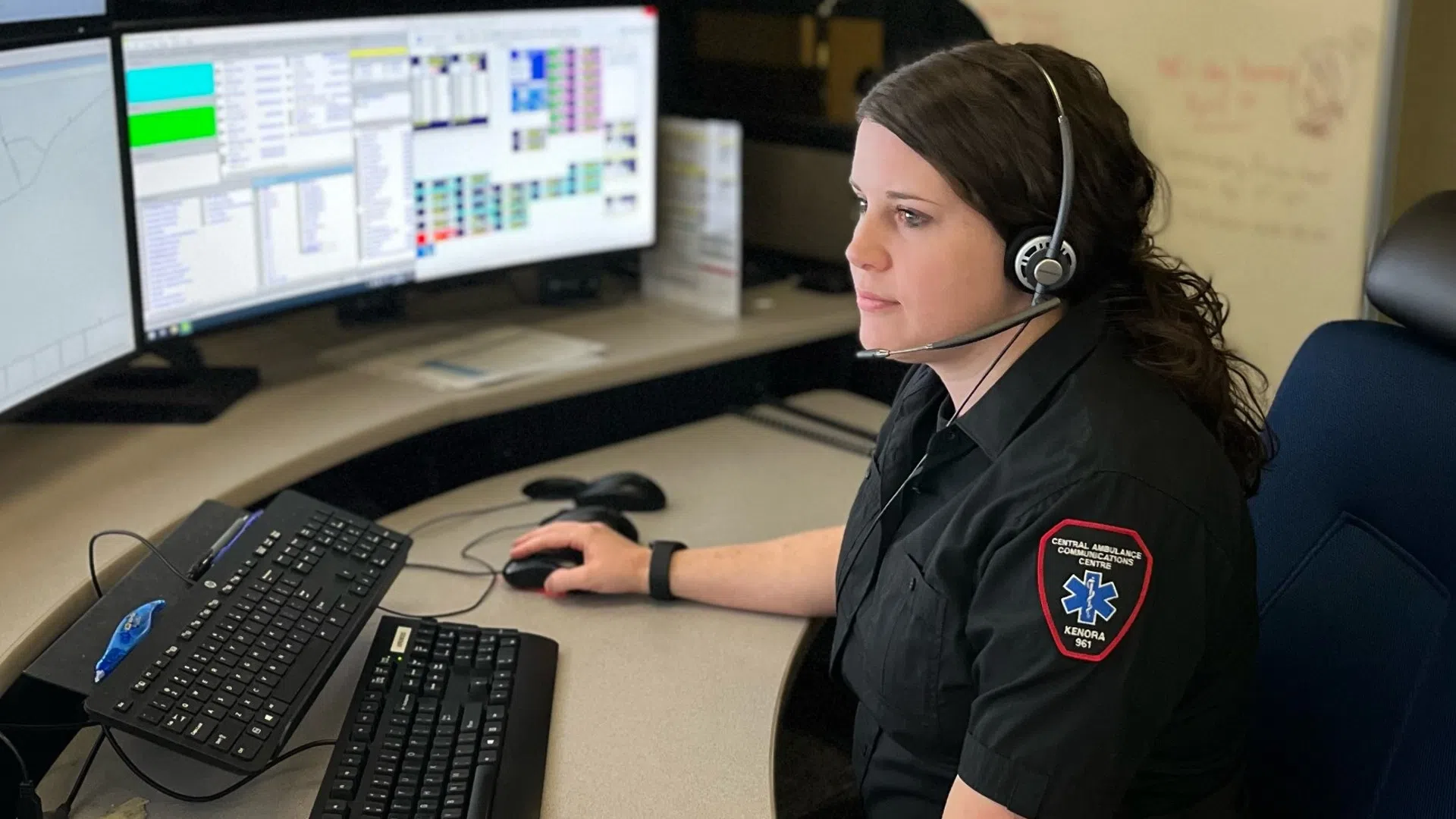The people who answer our 9-1-1 calls are in the spotlight.
National Public Safety Telecommunicators Week was celebrated last week and helped to shed light on those who answer emergency calls and dispatch necessary emergency personnel to a scene.
The Kenora Central Ambulance Communications Centre handles calls from across the Kenora and Rainy River District.
Jenna Mattson, an ambulance communications officer, says the average is 30,000 calls a year.
“Our catchment area, so who we dispatch or, who we respond to, who we are responsible for in our area, is a catchment area that’s bigger than the country of Sweden. That’s the amount of coverage we do for the fire and ambulance,” says Mattson.
The centre provides dispatch services to 15 EMS services, 33 First Response teams and 37 fire departments within that area.
Mattson says there are three positions – a call taker, a dispatcher and a supervisor.
The call taker answers the 911 calls while the dispatcher issues the resources required.
“They all have pretty big jobs. The call taker will find their location. They have to verify their location, and they will take all the information. They ask the questions they need to get based on the situation of the call.”
Mattson says the call taker is in a position to provide instructions such as first aid instructions, CPR or when emergency personnel will be on the scene.
They are likely the first person someone will talk to in an emergency, and emotions will often run high.
“A distressed caller, it’s just a lot of screaming and crying, and we have to know how to navigate that. We have some skills on how to deal with people dealing with those emergency situations. I try to calm people down as much as possible to let them know that we are helping them.”
Mattson had an interest in being a police dispatcher when in university.
Upon being hired, Mattson was sent to Toronto for about six weeks of training before returning to Kenora for more training at the communication centre.
Training centres are also in Thunder Bay and Sudbury.
“The dispatching portion of it is a lot of technology that you’re having to learn and do different programs. The call taking, it’s a separate program that you’re reading scripts, and you’re learning what to say and how to navigate each call based on also the medical problem.”
The Kenora Central Ambulance Communications Centre has 25 employees and always looks to hire.

